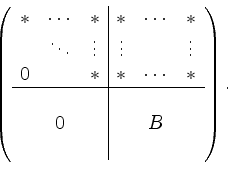

Mathematics-Online lexicon:

|
[home] [lexicon] [problems] [tests] [courses] [auxiliaries] [notes] [staff] |

|
|
Mathematics-Online lexicon: | ||
QR-Factorization | ||
| A B C D E F G H I J K L M N O P Q R S T U V W X Y Z | overview |

The permutations are recorded in the index vector ![]() , which initially
is set to
, which initially
is set to
![]() . For any column interchange
the corresponding indices in
. For any column interchange
the corresponding indices in ![]() are permuted.
are permuted.
Download:
| ( .m, | 469 , | 02.07.2007) |
| automatically generated 7/ 2/2007 |